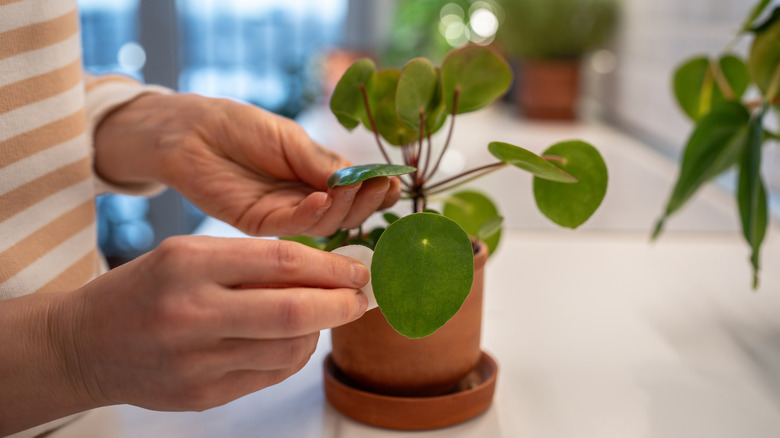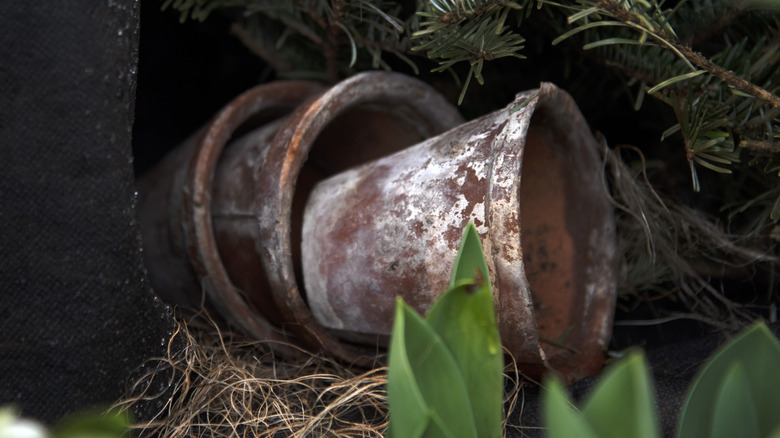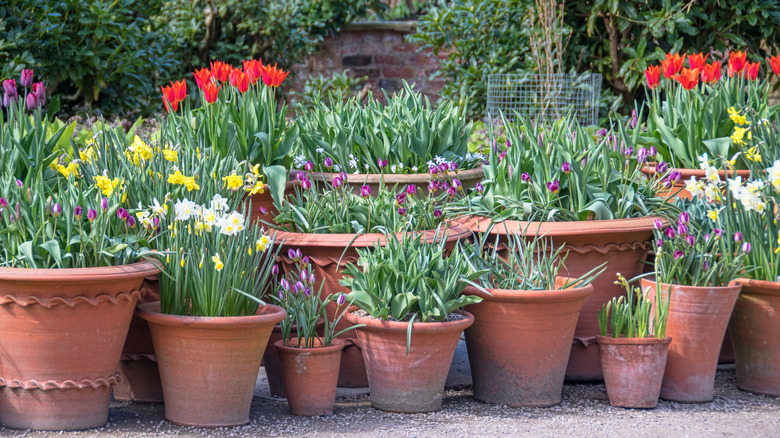How To Remove Mildew From Flower Pots To Give Garden Containers New Life
It always starts the same way. You go to water your plants and spot that powdery, white stuff clinging to the rim of the pot. Maybe you ignore it the first time. But soon it spreads, and your once-pristine container looks like it's been sitting in a damp basement. The first step to dealing with it is simple. Start by removing the plant and tossing out the old soil. Even if it looks dry, that mix can hold onto mildew spores, insect eggs, and decaying roots. Then give the pot a strong rinse with water to dislodge any loose grime.
Now for the real clean-up, fill a bucket or sink with warm water and dish soap. Using a stiff-bristled brush or a scouring pad, scrub the inside and outside thoroughly. If you're working with a clay pot, you might notice white, chalky crust along the sides as well. Use steel wool or the flat edge of a butter knife to scrape it off gently before giving the pot one last scrub. Once the surface looks clean, rinse it well to wash off any remaining soap or loosened residue.
Kill mildew at the source with a deep clean
Once your pot is scrubbed clean, it's time to kill off any mildew spores still clinging to the surface. This step is where the real disinfecting happens, and you have a few effective options to choose from. If you want a natural route, go with white vinegar. Mix one part of vinegar with ten parts water, and then soak the pot for longer than an hour. After soaking, give the pot a quick wipe and set it aside to dry.
For tougher cases, a bleach solution works well. Combine one part bleach with 10 parts water and soak the pot for 10 to 60 minutes, making sure all sides are covered. Bleach only works if the pot is already free of dirt, so don't skip the scrubbing step. After soaking, rinse the pot thoroughly with clean water. Bleach residue can damage plants, so it's important not to leave any behind.
Also, don't pour bleach water into the garden. You can just drain it in a sink. Moreover, if you're in a hurry, a quick wipe with rubbing alcohol or a plant-safe disinfectant spray can kill mildew on contact. Just douse the surface, and let it sit for a few minutes. Once disinfected, place the pot in a sunny or warm spot and let it dry out completely. That final bit of heat and airflow helps ensure the powdery white spots won't come back.
Keep mildew from coming back for good
There's no point in deep-cleaning your pots if mildew is just going to creep back in a few weeks later. The key is to make sure your pots don't give mildew the right conditions to grow in the first place. Make sure there's a proper drainage hole in your flower pots, and don't let water collect in them. You should only water when the surface soil feels crumbly and dry, and empty any runoff from the tray. Also, give your pots some breathing room so air can flow freely around them. Even a little sunlight on the soil and rim can help keep things dry. Other than that, wipe down your pots between uses, and always start fresh with clean potting soil.
Leftover soil or algae on the rim is all that mildew needs to return. If you want an extra layer of protection, try spraying tea tree, clove, or thyme essential oil on the soil. These natural antifungals won't replace proper cleaning, but they can help keep spores in check. However, if all else fails, you can pick up a plant-safe fungicide from the garden center. Just make sure it's biodegradable and labeled safe for containers. A little prevention now can save you the hassle of scrubbing mildew off your pots all over again.


